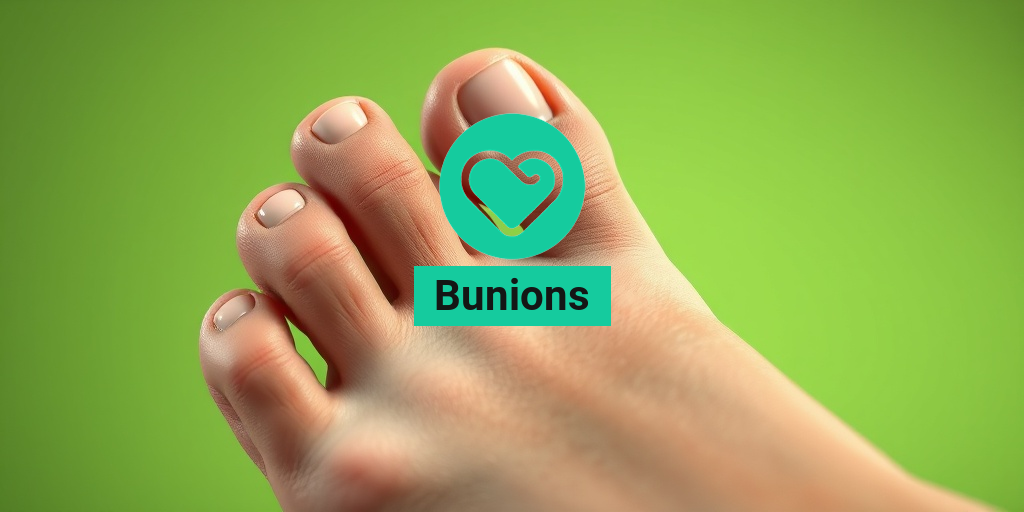What Is Batten Disease?
Batten Disease, also known as neuronal ceroid lipofuscinosis (NCL), is a rare and devastating genetic disorder that primarily affects children. This condition is characterized by the progressive degeneration of the nervous system, leading to severe neurological impairment. Batten Disease is classified into several types, with the most common being CLN1, CLN2, and CLN3, each caused by mutations in different genes. Understanding Batten Disease is crucial for early diagnosis and intervention, which can significantly impact the quality of life for affected individuals.
The disease is inherited in an autosomal recessive manner, meaning that a child must inherit two copies of the mutated gene—one from each parent—to develop the condition. As a result, families with a history of Batten Disease may benefit from genetic counseling to assess their risk of having affected children.
Pathophysiology of Batten Disease
The underlying cause of Batten Disease involves the accumulation of lipopigments in the body’s cells, particularly in the brain. These lipopigments are toxic and lead to cell death, resulting in the progressive loss of cognitive and motor functions. The exact mechanisms of how these accumulations cause symptoms are still being researched, but it is clear that they disrupt normal cellular processes.
Types of Batten Disease
- CLN1 Disease: Caused by mutations in the CLN1 gene, this type typically manifests in infancy and leads to rapid neurological decline.
- CLN2 Disease: Linked to mutations in the CLN2 gene, this form usually appears in early childhood and is characterized by seizures and vision loss.
- CLN3 Disease: The most common form, caused by mutations in the CLN3 gene, often begins in late childhood and leads to progressive vision loss and cognitive decline.
Batten Disease Symptoms
The symptoms of Batten Disease can vary significantly depending on the type and age of onset. However, there are some common signs that parents and caregivers should be aware of:
Early Symptoms
- Vision Problems: One of the earliest signs is often a decline in vision, which may progress to blindness.
- Seizures: Many children with Batten Disease experience seizures, which can vary in frequency and severity.
- Developmental Delays: Affected children may show delays in reaching developmental milestones, such as walking or talking.
Progressive Symptoms
As the disease progresses, additional symptoms may develop, including:
- Motor Skills Decline: Children may lose the ability to walk or perform daily activities independently.
- Cognitive Decline: There may be a noticeable decline in cognitive abilities, including memory and problem-solving skills.
- Behavioral Changes: Changes in behavior, such as increased irritability or mood swings, can also occur.
Late-Stage Symptoms
In the later stages of Batten Disease, individuals may experience:
- Severe Neurological Impairment: This can include loss of speech and the ability to communicate.
- Loss of Motor Function: Many individuals may become wheelchair-bound or bedridden.
- Life-Threatening Complications: As the disease progresses, complications such as pneumonia can become life-threatening.
Raising awareness about Batten Disease is essential, especially as Batten Disease Awareness Day approaches in 2025. Organizations like the Batten Disease Family Association provide valuable resources and support for families affected by this condition.
If you or someone you know is affected by Batten Disease, consider reaching out to resources like Yesil Health AI for evidence-based health answers and support. Together, we can work towards a better understanding and treatment of this challenging disease. 🌟

Batten Disease Stages
Batten Disease, a rare and devastating neurodegenerative disorder, progresses through several distinct stages, each characterized by a unique set of symptoms and challenges. Understanding these stages is crucial for families and caregivers as they navigate the complexities of this condition.
Stage 1: Early Childhood Symptoms
The initial stage of Batten Disease typically occurs in early childhood, often between the ages of 2 and 6. During this phase, children may exhibit subtle signs that can be easily overlooked. Common symptoms include:
- Vision problems: Children may experience difficulty seeing, which can manifest as clumsiness or an inability to focus on objects.
- Developmental delays: Parents might notice that their child is not meeting typical developmental milestones, such as walking or talking.
- Behavioral changes: Some children may become more irritable or withdrawn.
Recognizing these early symptoms is vital for timely diagnosis and intervention.
Stage 2: Progression of Symptoms
As Batten Disease progresses, usually in the late childhood years, symptoms become more pronounced. This stage can be particularly challenging for families as they witness their child’s decline. Key symptoms during this stage include:
- Seizures: Many children begin to experience seizures, which can vary in frequency and severity.
- Increased vision loss: Vision may deteriorate further, leading to blindness in some cases.
- Motor skills decline: Children may struggle with coordination and balance, making everyday activities difficult.
Support from healthcare professionals becomes increasingly important during this stage to manage symptoms effectively.
Stage 3: Advanced Symptoms
In the later stages of Batten Disease, typically seen in adolescence or early adulthood, individuals face significant challenges. This stage is marked by:
- Severe cognitive decline: Many individuals experience profound cognitive impairment, affecting their ability to communicate and interact.
- Loss of mobility: Most individuals will require assistance with mobility and daily activities.
- Emotional and behavioral changes: Increased anxiety, depression, and behavioral issues may arise.
At this stage, palliative care and support systems become essential to improve quality of life.
Batten Disease Causes
Batten Disease is primarily caused by genetic mutations that affect the body’s ability to break down certain lipids, leading to their accumulation in the cells. This accumulation is particularly harmful to neurons, resulting in the neurological symptoms associated with the disease.
Genetic Factors
The most common form of Batten Disease, known as CLN1, is caused by mutations in the CLN1 gene. Other forms, such as CLN2 and CLN3, are linked to different genetic mutations. These mutations are inherited in an autosomal recessive pattern, meaning that a child must inherit two copies of the mutated gene (one from each parent) to develop the disease.
Biochemical Pathways
The pathophysiology of Batten Disease involves the disruption of lysosomal function. Lysosomes are cellular organelles responsible for breaking down waste materials and cellular debris. In Batten Disease, the accumulation of lipopigments, particularly subunit c of ATP synthase, leads to cellular dysfunction and death. This process primarily affects neurons, which are highly sensitive to metabolic disturbances.
Environmental Factors
While Batten Disease is primarily genetic, researchers are exploring whether environmental factors may play a role in the disease’s onset or progression. Factors such as exposure to toxins or infections during critical developmental periods could potentially influence the severity of symptoms, although more research is needed in this area.
Understanding the causes of Batten Disease is essential for developing targeted therapies and interventions. As research continues, there is hope for improved treatments and support for affected families.

Batten Disease Risk Factors
Batten Disease, a rare and devastating neurodegenerative disorder, primarily affects children and is characterized by a progressive loss of vision, cognitive decline, and motor skills. Understanding the risk factors associated with Batten Disease is crucial for early detection and intervention. Here, we explore the various factors that may increase the likelihood of developing this condition.
Genetic Factors
The most significant risk factor for Batten Disease is its genetic basis. It is classified as a genetic disorder, meaning it is inherited from parents who carry mutations in specific genes. The most common forms of Batten Disease, such as CLN1, CLN2, and CLN3, are caused by mutations in the respective genes. If a child inherits two copies of the mutated gene (one from each parent), they are at a higher risk of developing the disease.
Family History
Having a family history of Batten Disease significantly increases the risk. Families with a history of the disorder should consider genetic counseling to understand their risks and the implications for future generations. This is particularly important for families in which the disease has been previously diagnosed, as it can help in making informed decisions regarding family planning.
Ethnicity and Geography
Research indicates that certain ethnic groups may be more susceptible to Batten Disease. For instance, the CLN3 variant is more prevalent among individuals of Northern European descent. Additionally, geographic factors can play a role, as some regions may have higher incidences of the disease due to genetic isolation or specific population dynamics.
Age of Onset
Batten Disease typically manifests in childhood, with symptoms often appearing between the ages of 5 and 10. However, the age of onset can vary depending on the specific type of Batten Disease. Early-onset forms tend to progress more rapidly, while late-onset forms may have a slower progression. Understanding the age-related risk can aid in early diagnosis and management.
Batten Disease Diagnosis
Diagnosing Batten Disease can be challenging due to its rarity and the overlap of symptoms with other neurological disorders. However, early diagnosis is vital for managing the condition effectively. Here’s a closer look at the diagnostic process for Batten Disease.
Clinical Evaluation
The first step in diagnosing Batten Disease involves a thorough clinical evaluation. Healthcare providers will assess the patient’s medical history, family history, and symptoms. Common symptoms include:
- Vision loss
- Seizures
- Cognitive decline
- Motor skill deterioration
These symptoms can vary widely among individuals, making a comprehensive evaluation essential.
Genetic Testing
Once Batten Disease is suspected, genetic testing is often the next step. This testing can confirm the presence of mutations in the genes associated with Batten Disease, such as CLN1, CLN2, and CLN3. Genetic testing is particularly important for families with a history of the disease, as it can provide definitive answers and guide treatment options.
Imaging Studies
Imaging studies, such as MRI or CT scans, may also be utilized to assess brain structure and function. These imaging techniques can help identify characteristic changes in the brain associated with Batten Disease, such as atrophy or other abnormalities. While imaging alone cannot confirm a diagnosis, it can provide valuable information to support clinical findings.
Electroencephalogram (EEG)
In cases where seizures are present, an electroencephalogram (EEG) may be performed to monitor electrical activity in the brain. This test can help identify seizure patterns and assess the overall brain function, which is crucial for managing symptoms effectively.
In summary, diagnosing Batten Disease involves a combination of clinical evaluation, genetic testing, imaging studies, and EEG. Early diagnosis is essential for managing the disease and improving the quality of life for affected individuals and their families. If you suspect that your child may be at risk, consult a healthcare professional for guidance and support. 🩺

Batten Disease Treatment Options
Batten Disease, a rare and devastating neurodegenerative disorder, primarily affects children and leads to severe neurological decline. While there is currently no cure for Batten Disease, various treatment options aim to manage symptoms and improve the quality of life for those affected. Understanding these options is crucial for families navigating this challenging journey.
1. Symptomatic Treatments
Since Batten Disease manifests with a range of symptoms, treatment often focuses on alleviating these specific issues. Common symptomatic treatments include:
- Antiepileptic medications: Many children with Batten Disease experience seizures. Medications such as levetiracetam or lamotrigine can help control seizure activity.
- Physical therapy: As mobility declines, physical therapy can assist in maintaining muscle strength and flexibility, helping children retain some independence.
- Occupational therapy: This therapy focuses on enhancing daily living skills, enabling children to perform tasks as independently as possible.
- Speech therapy: Many children with Batten Disease face communication challenges. Speech therapy can help improve their ability to communicate effectively.
2. Nutritional Support
Maintaining proper nutrition is vital for children with Batten Disease, especially as swallowing difficulties may arise. A registered dietitian can help create a tailored meal plan that ensures adequate caloric intake and nutritional balance. In some cases, feeding tubes may be necessary to ensure proper nutrition.
3. Clinical Trials and Emerging Therapies
Research into Batten Disease is ongoing, with numerous clinical trials exploring potential therapies. Some promising areas of research include:
- Gene therapy: This innovative approach aims to correct the underlying genetic defects causing Batten Disease. Early trials have shown potential in improving neurological function.
- Enzyme replacement therapy: For certain types of Batten Disease, replacing the missing enzyme may slow disease progression.
- Stem cell therapy: Researchers are investigating the use of stem cells to repair damaged neurons and restore function.
Families are encouraged to consult with healthcare providers about available clinical trials, as participation may provide access to cutting-edge treatments.
4. Palliative Care
As Batten Disease progresses, palliative care becomes increasingly important. This approach focuses on providing relief from symptoms and improving the overall quality of life for both the patient and their family. Palliative care teams can offer support in various areas, including:
- Pain management: Ensuring comfort through appropriate pain relief strategies.
- Emotional support: Counseling services for families to cope with the emotional toll of the disease.
- End-of-life care: Guidance and support for families during the final stages of the disease.
Batten Disease Support and Resources
Living with Batten Disease can be overwhelming for both patients and their families. Fortunately, numerous resources and support networks are available to help navigate this challenging journey.
1. Batten Disease Family Association
The Batten Disease Family Association (BDFA) is a vital resource for families affected by Batten Disease. They provide information on the disease, connect families with one another, and offer support through various programs. Their website features a wealth of resources, including:
- Educational materials: Comprehensive guides on Batten Disease, its symptoms, and treatment options.
- Support groups: Opportunities for families to connect and share experiences.
- Awareness campaigns: Initiatives to raise awareness about Batten Disease, including the upcoming Batten Disease Awareness Day 2025.
2. Online Communities
Online forums and social media groups can provide a sense of community for families dealing with Batten Disease. Platforms like Facebook and Reddit host groups where families can share their experiences, seek advice, and find emotional support. Engaging with others who understand the challenges can be incredibly comforting.
3. Professional Counseling
Seeking professional counseling can be beneficial for families coping with the emotional impact of Batten Disease. Therapists specializing in chronic illness can help family members process their feelings and develop coping strategies.
4. Educational Resources
Many organizations offer educational resources for schools and caregivers to better understand Batten Disease. These resources can help create a supportive environment for affected children, ensuring they receive the necessary accommodations and understanding from peers and educators.
In conclusion, while Batten Disease presents significant challenges, various treatment options and support resources are available to help families navigate this journey. By staying informed and connected, families can find hope and strength in the face of adversity. 💪❤️

Frequently Asked Questions about Batten Disease
What is Batten Disease?
Batten Disease is a rare genetic disorder that affects the nervous system, leading to progressive neurological decline. It is classified as a type of neuronal ceroid lipofuscinosis (NCL), which is characterized by the accumulation of lipopigments in the body’s tissues.
What are the symptoms of Batten Disease?
Symptoms of Batten Disease can vary depending on the specific type and age of onset, but common symptoms include:
- Vision loss or blindness 👁️
- Seizures
- Motor skill decline
- Cognitive impairment
- Behavioral changes
How is Batten Disease diagnosed?
Diagnosis typically involves a combination of clinical evaluations, family history assessments, and specialized tests such as:
- Genetic testing
- Electroencephalograms (EEGs) for seizure activity
- Ophthalmological examinations to assess vision loss
What is the prognosis for individuals with Batten Disease?
The prognosis for those affected by Batten Disease varies widely. Generally, the disease leads to progressive decline, and life expectancy can be significantly reduced. Early diagnosis and supportive care can help manage symptoms and improve quality of life.
Is there a cure for Batten Disease?
Currently, there is no cure for Batten Disease. However, research is ongoing, and some treatments aim to manage symptoms and slow disease progression. Clinical trials may also offer new therapeutic options for patients.
How can I support Batten Disease awareness?
Raising awareness about Batten Disease is crucial. You can support awareness efforts by:
- Participating in awareness events, such as Batten Disease Awareness Day on specific dates like 2025
- Joining or donating to organizations like the Batten Disease Family Association
- Sharing information on social media platforms to educate others
Where can I find more information about Batten Disease?
For more information, consider visiting reputable health websites, joining support groups, or consulting with healthcare professionals who specialize in genetic disorders and neurological conditions.




